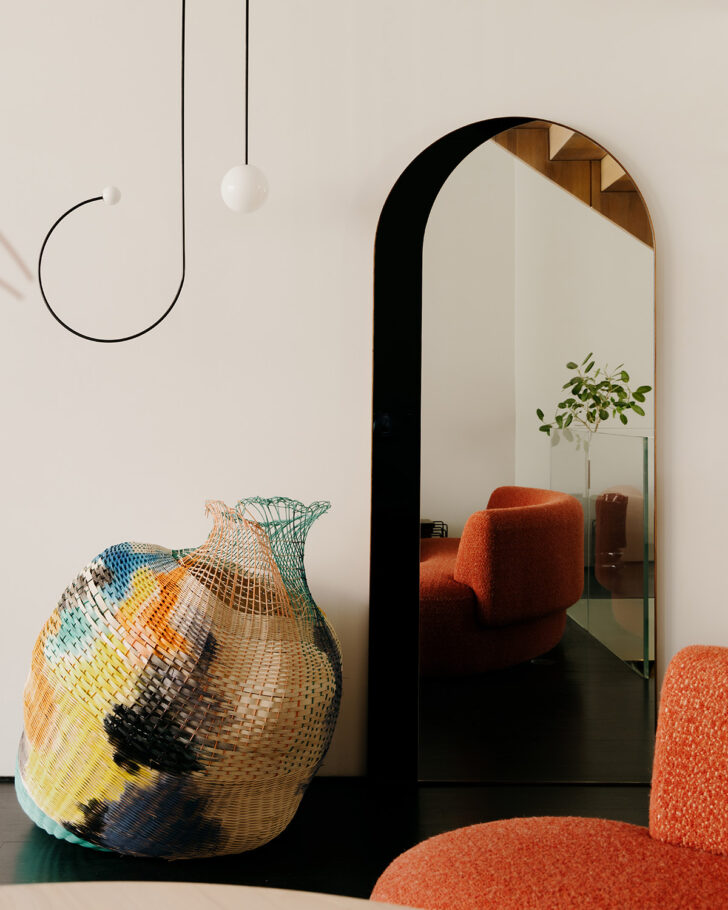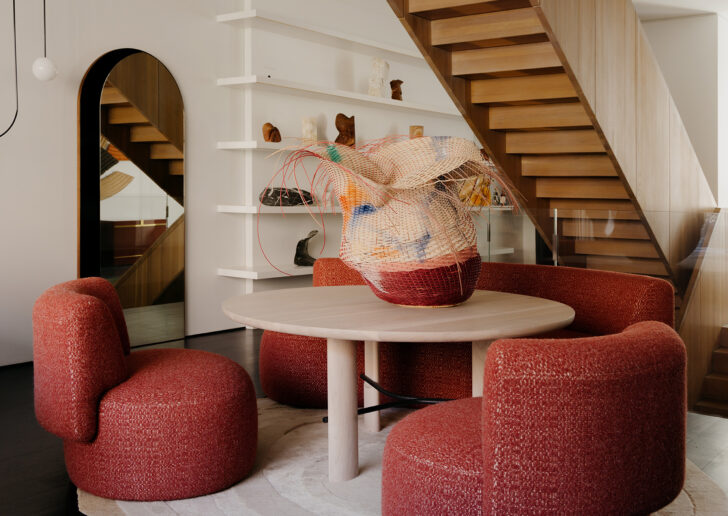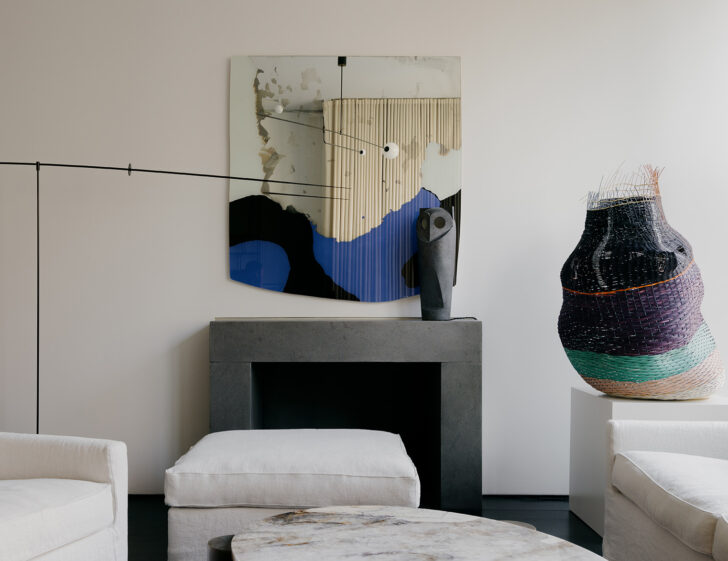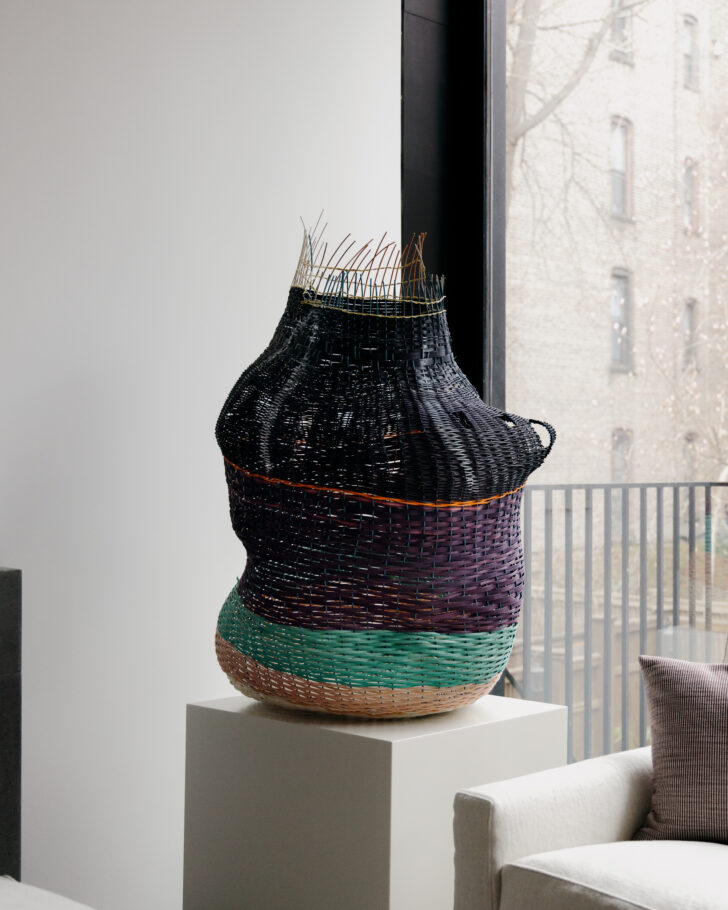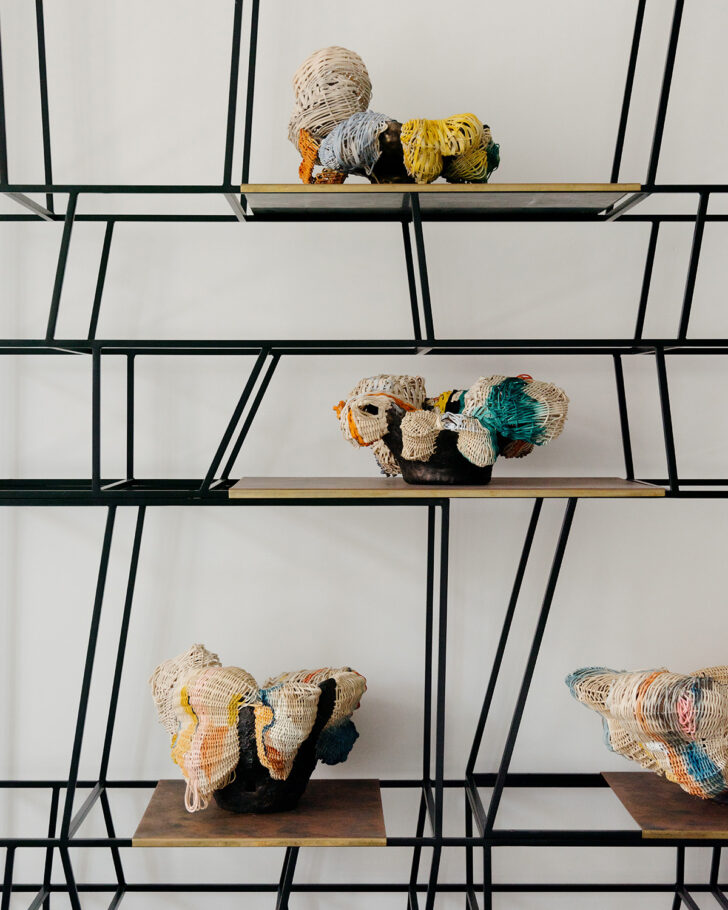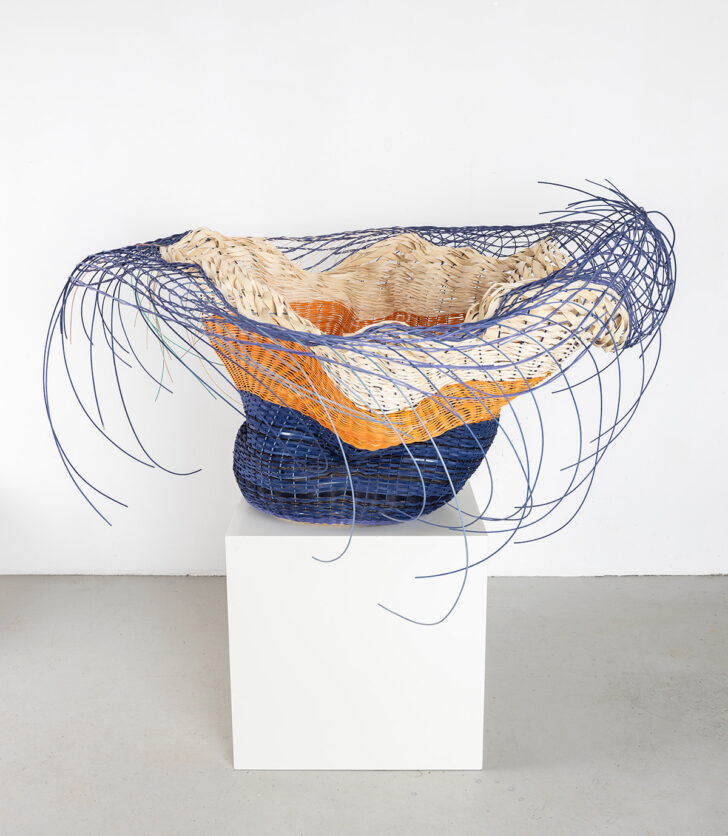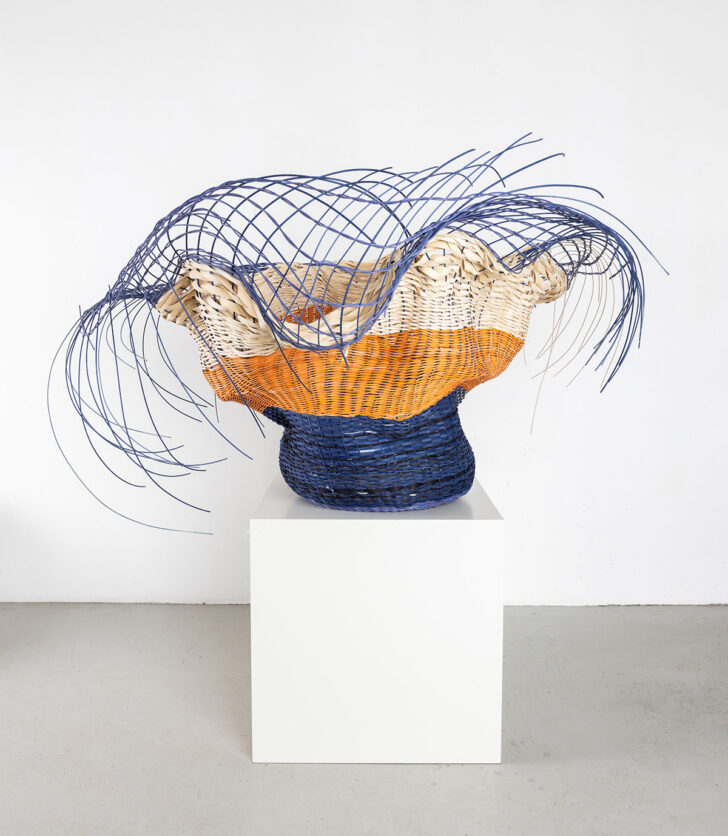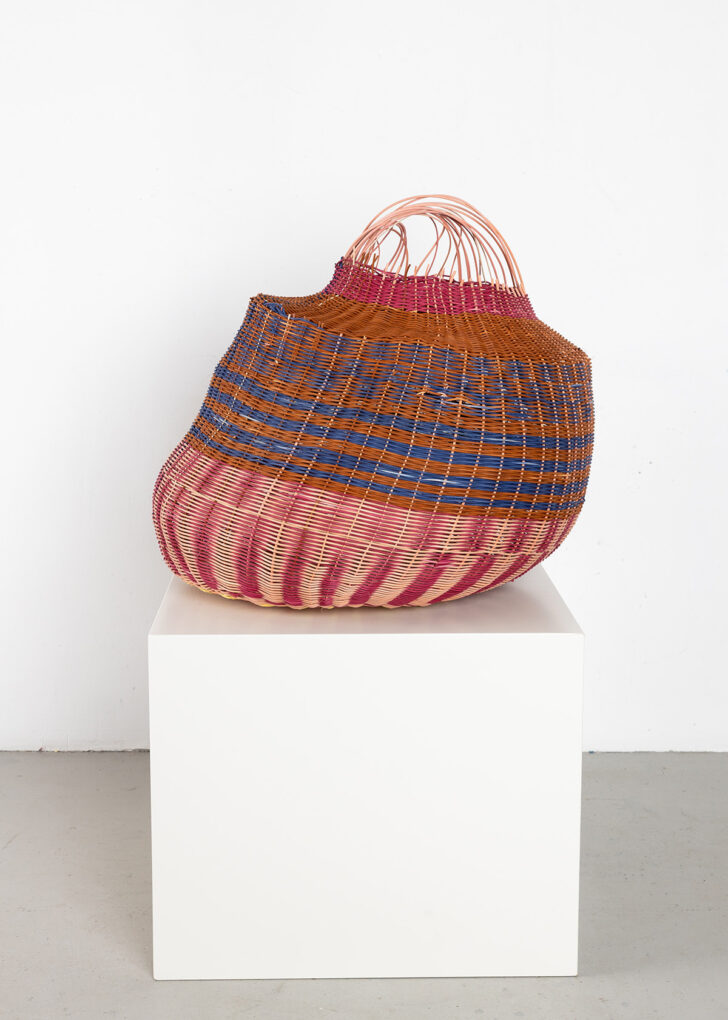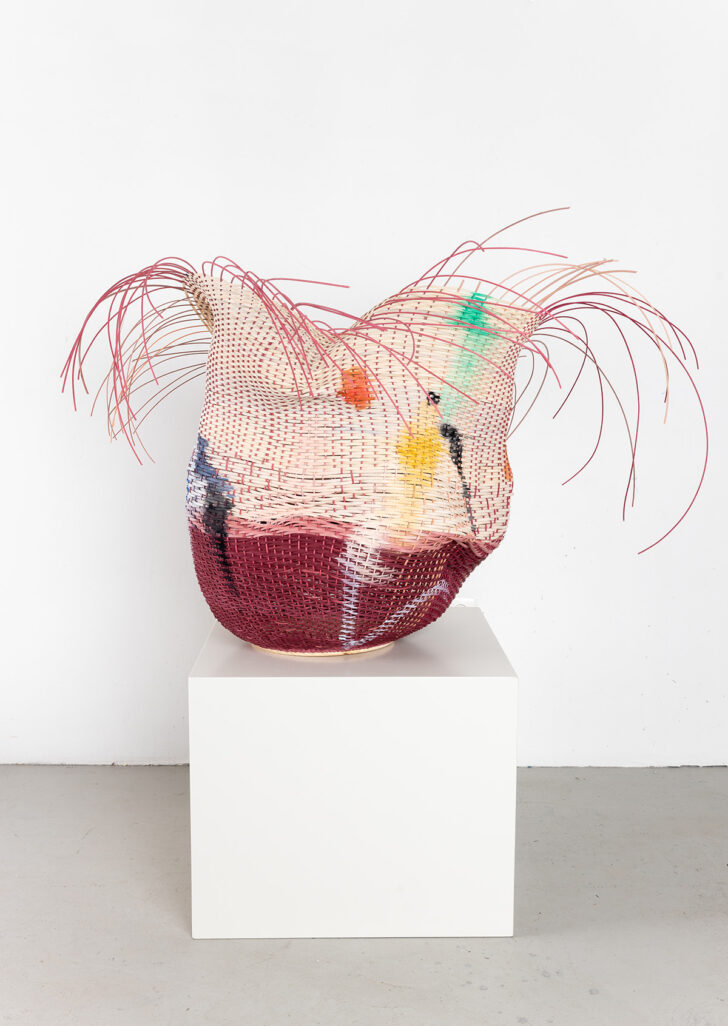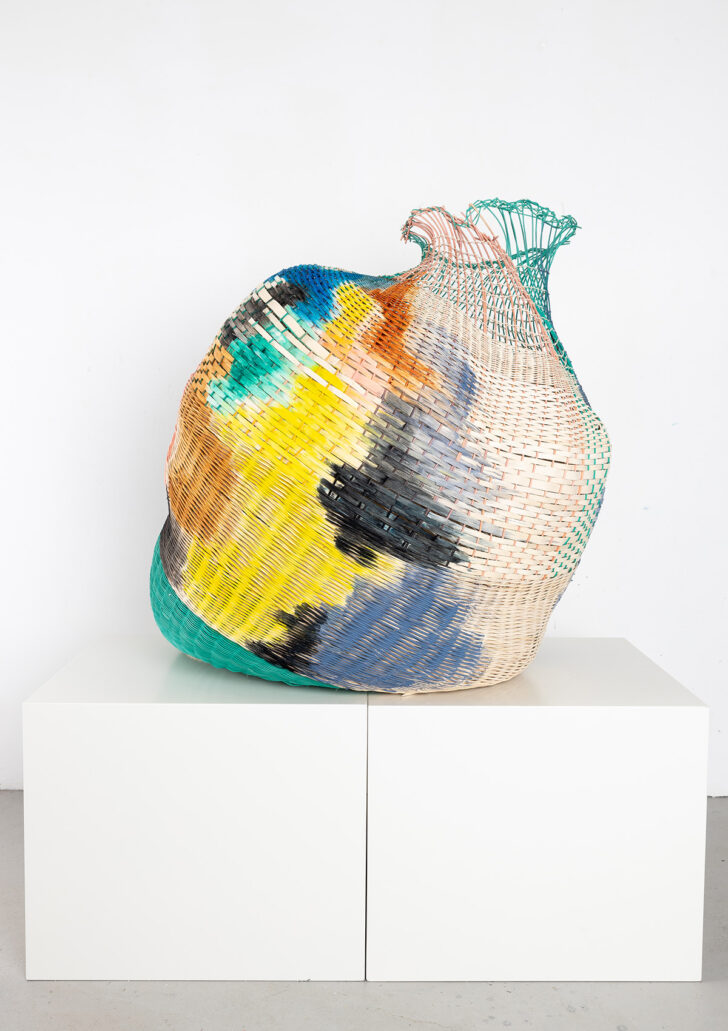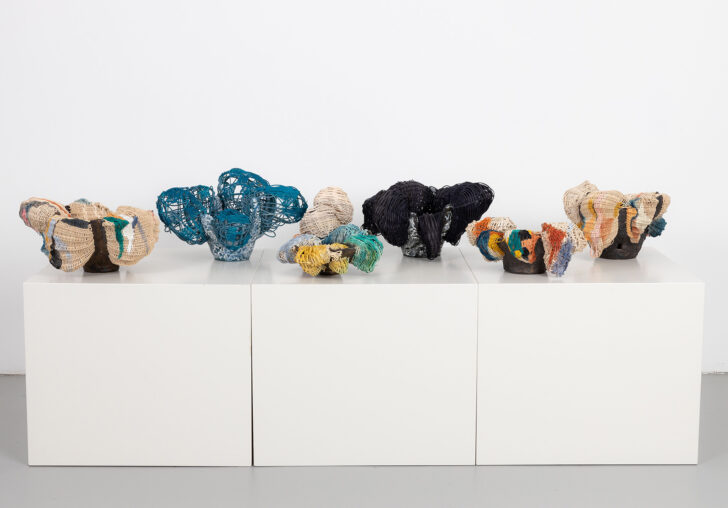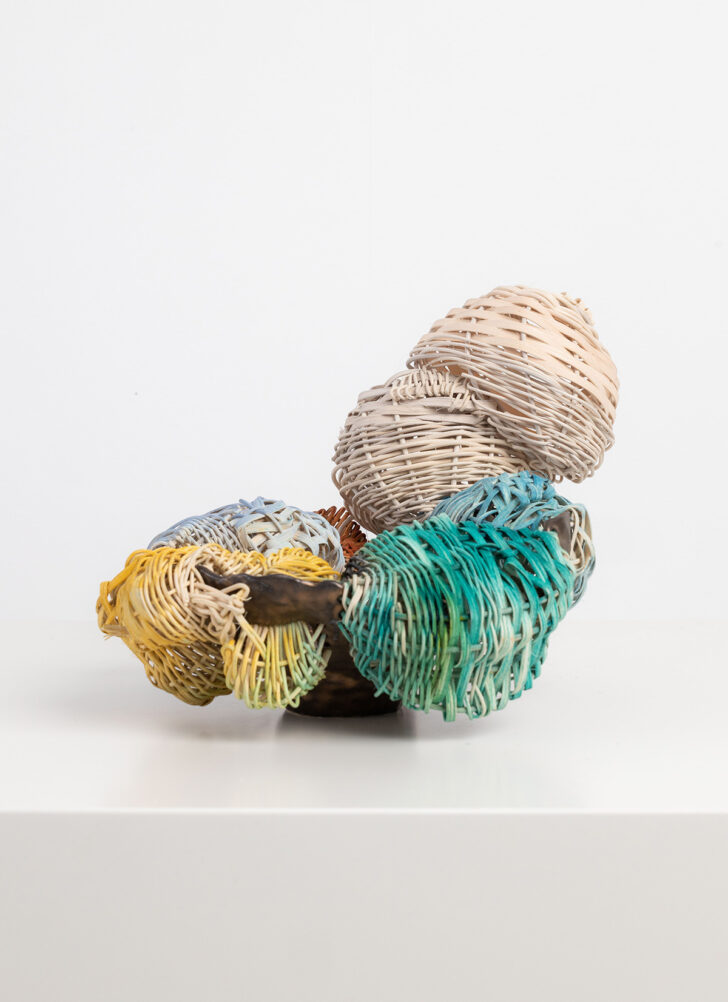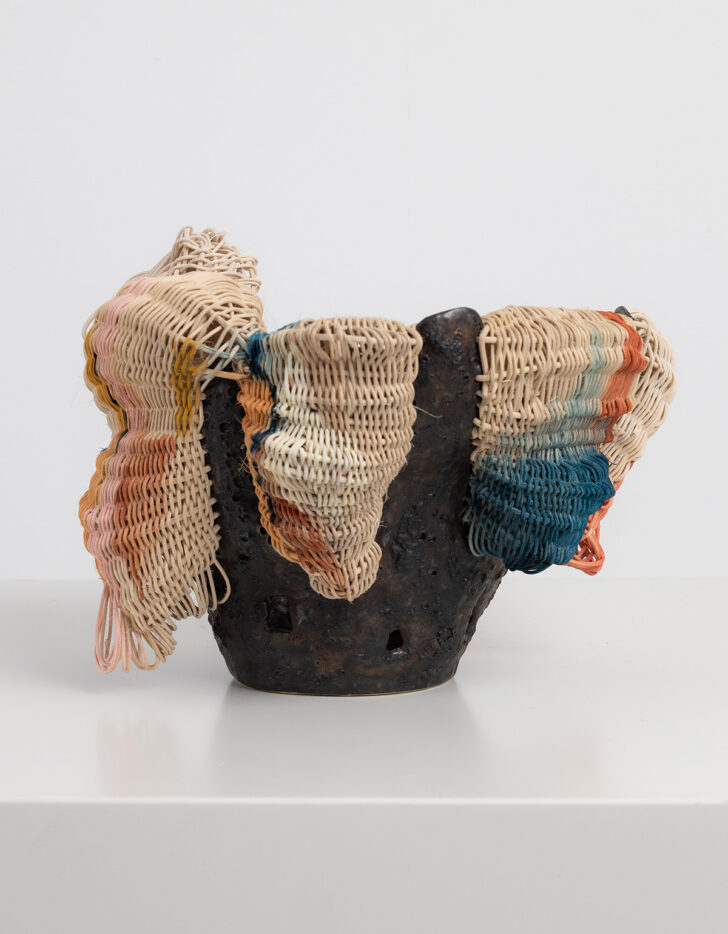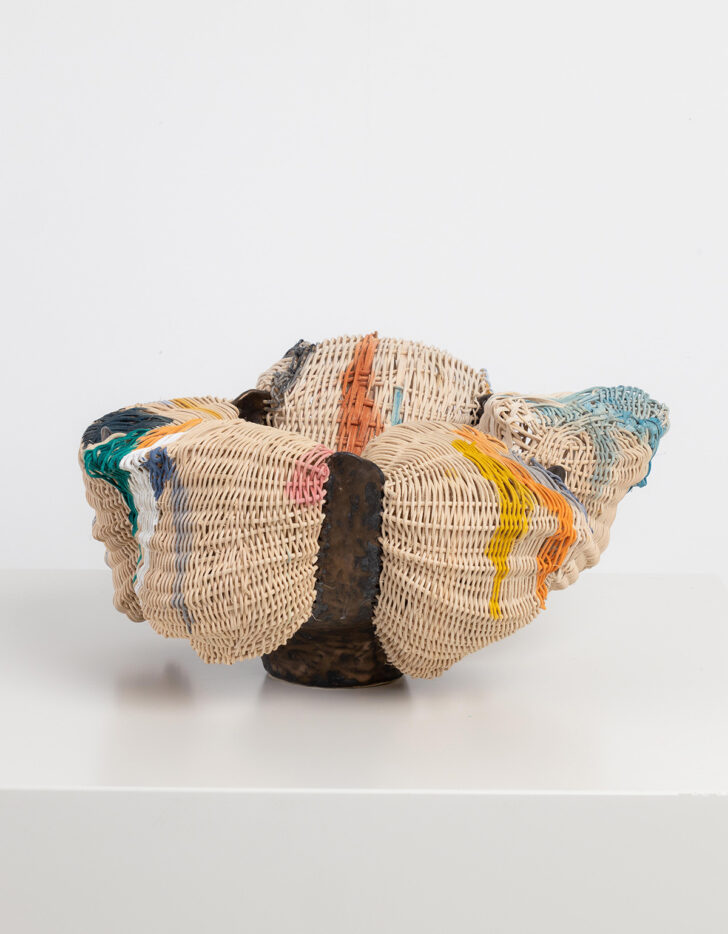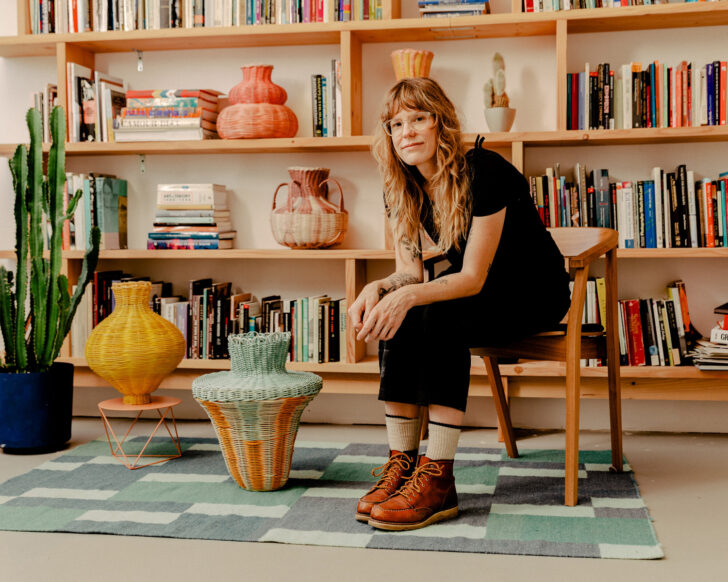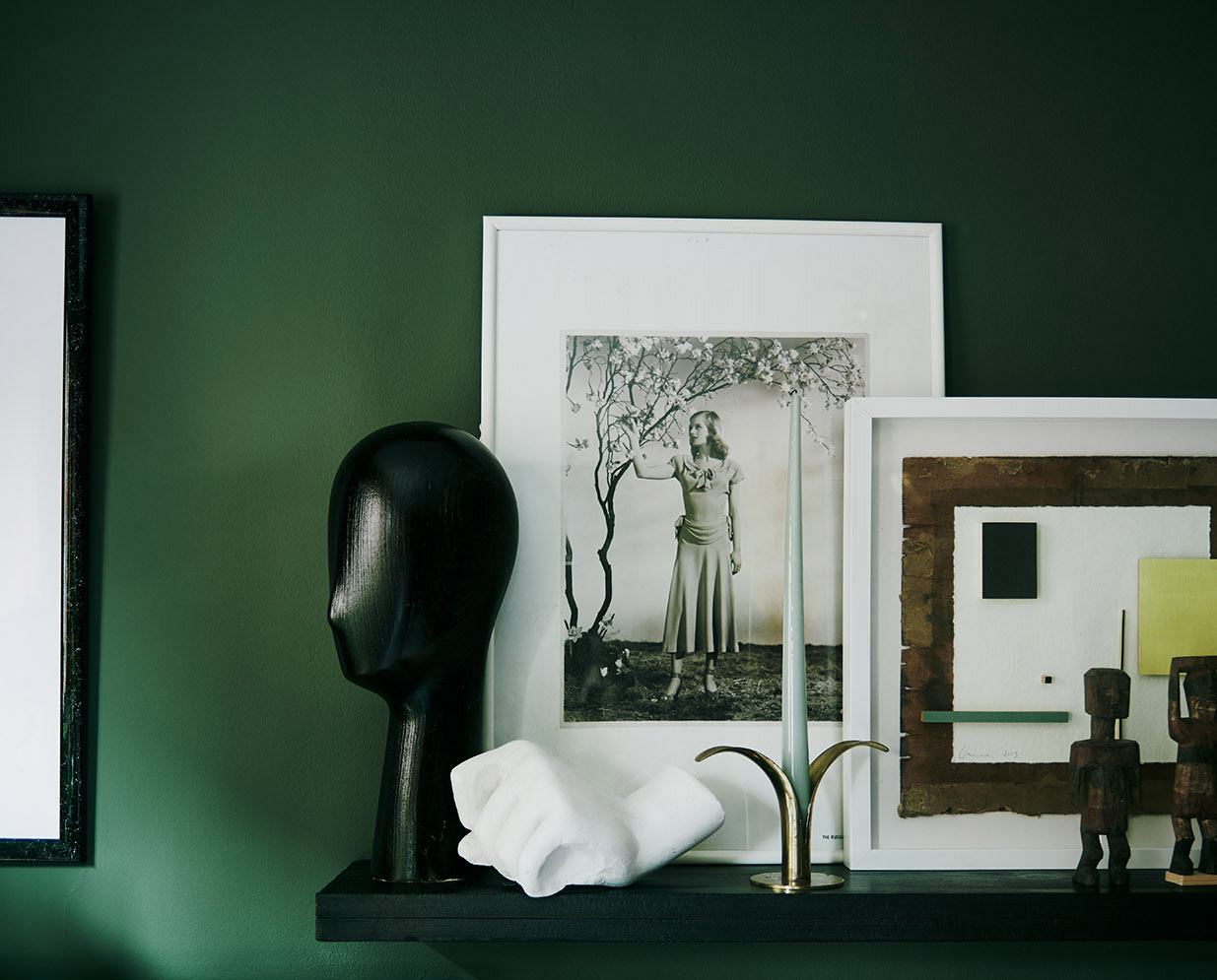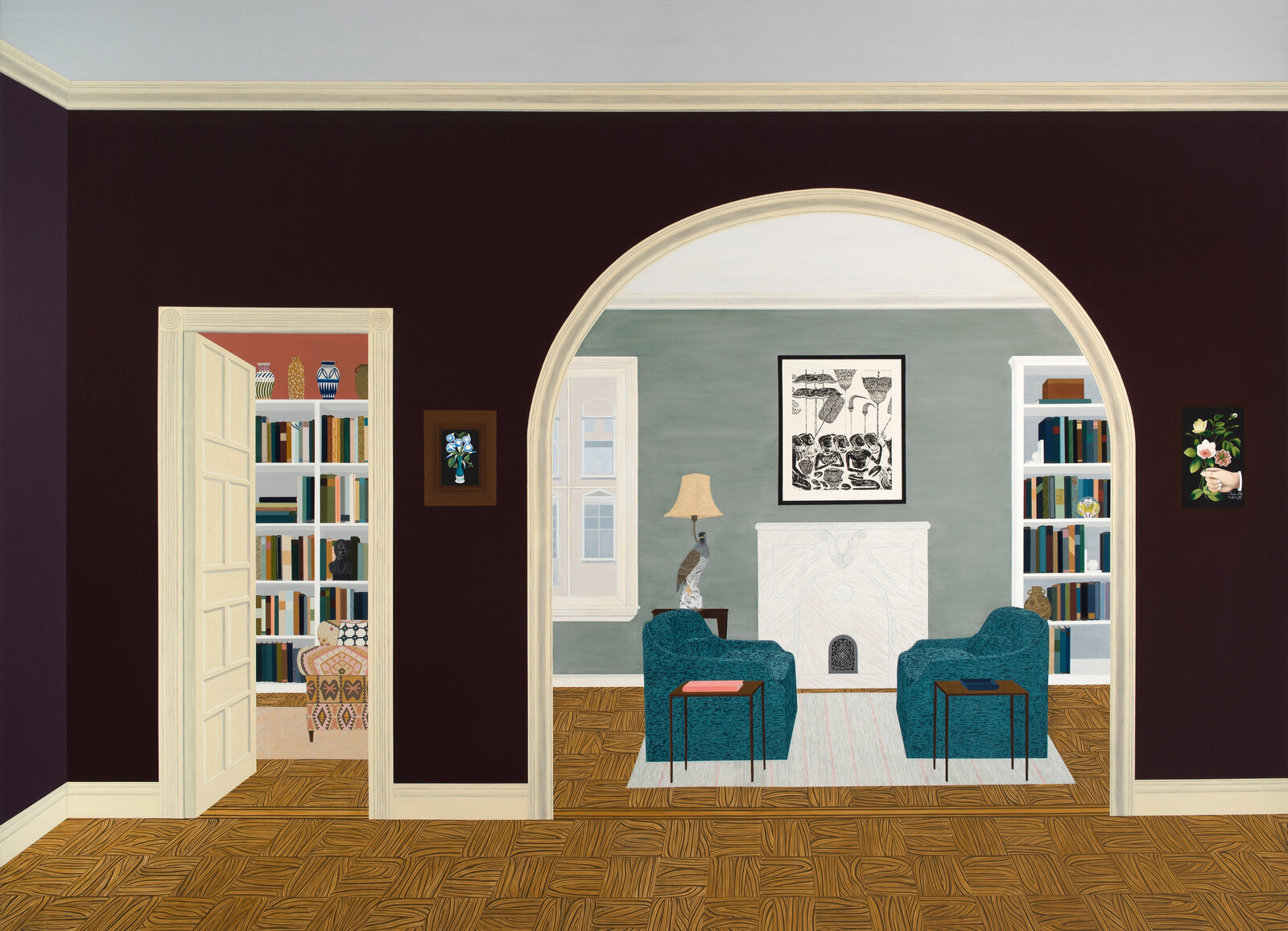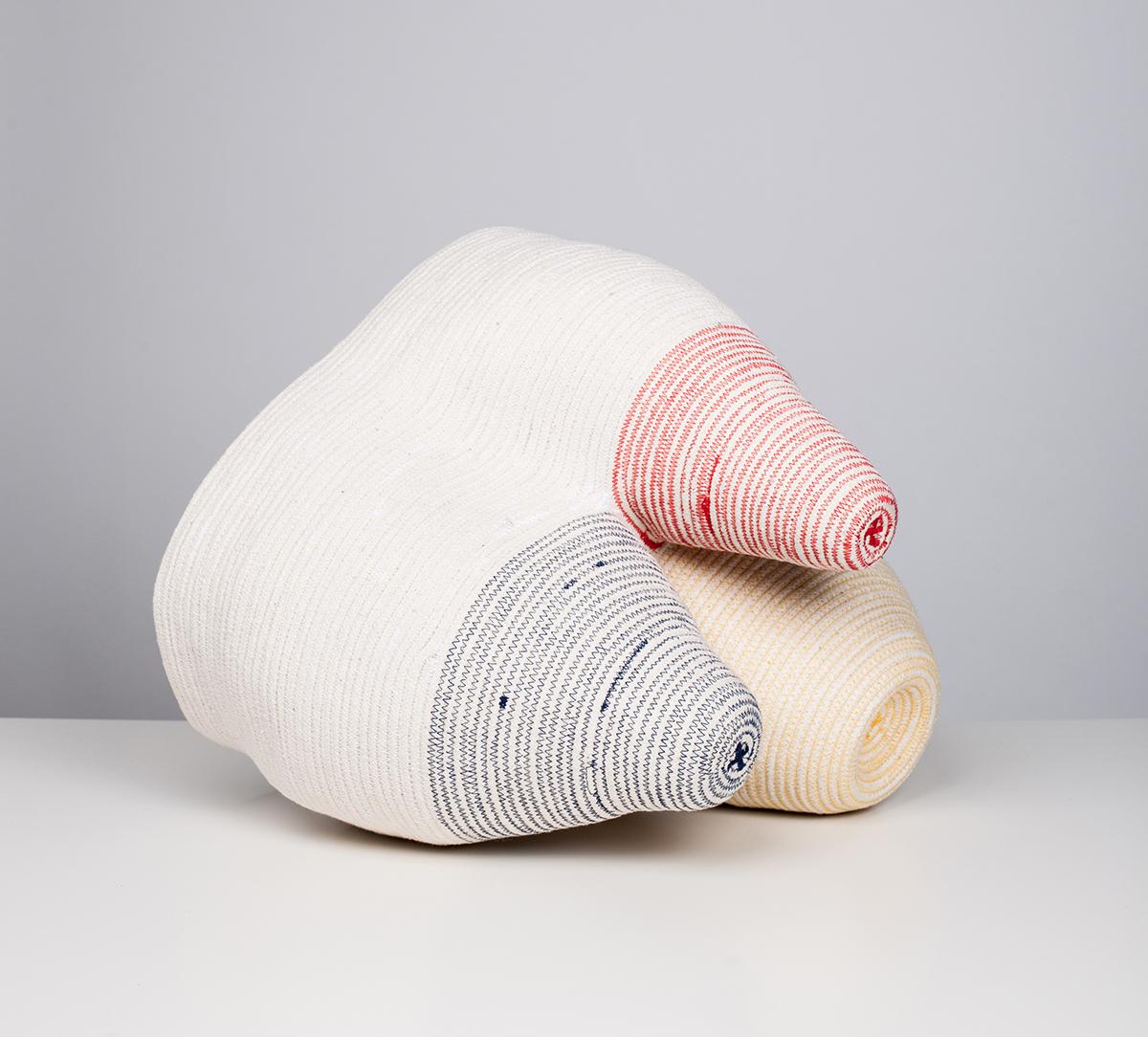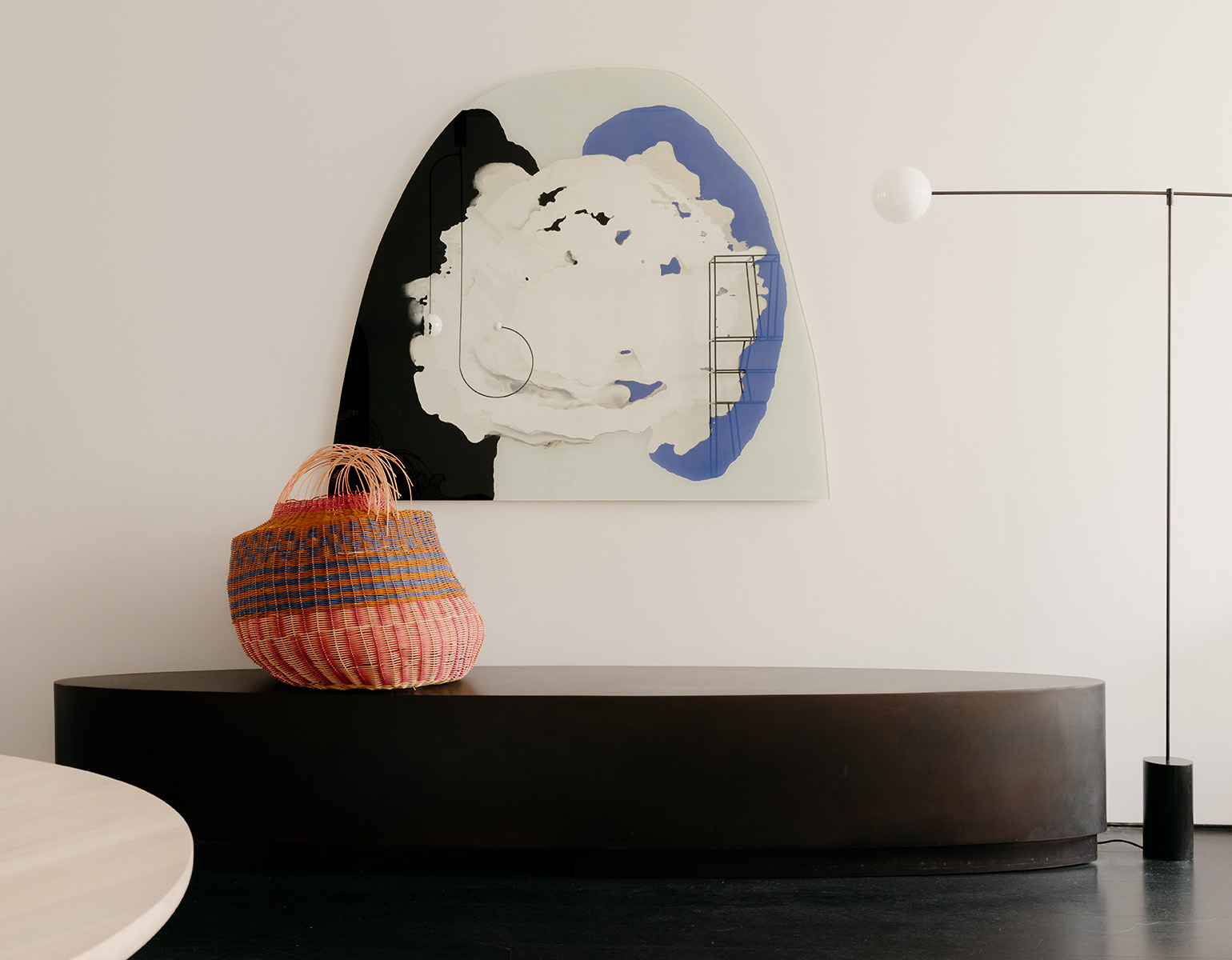
04.20.22
Excerpt: Exhibition
These Epically-Scaled, Hand-Painted Baskets Fuse Painting, Weaving, and Sculpture
When Chicago-based designer Dee Clements of Studio Herron talks about her weaving work, she likes to trace it back to where weaving began — before ceramics or stone carving were even a thing — to roughly 34,000 years ago, when early hunter-gatherers first fashioned plants into baskets. While there was artistry in those baskets, they primarily served a function — to gather food.
Clements, of course, has largely been freed from the craft’s initial constraints; most baskets these days are used purely as decoration or to hold something relatively insubstantial. But she still felt hemmed in by her own perfectionist tendencies, until a long talk with Future Perfect gallery director Laura Young — in advance of Clements’s solo show, which is on view at New York’s Casa Perfect through the spring — loosened her up. “Laura and I had a conversation early on about me always resolving my work with such tight perfection,” says Clements. “(Coincidentally, or maybe not, this was a common criticism of my work in grad school at Cranbrook, too.) She advised me to try to be more free and loose. I really listened to her thoughts and took them into consideration and made the work with them in mind.”
The resulting pieces play with a viewer’s expectations of a “basket” in the most wonderful ways. The baskets are exaggerated in form, some standing as many as three feet tall and bulging in spots; they sport loose fibers which sprout haphazardly in a ring around the basket’s openings; and they incorporate not only hand-dyed reeds but also painterly brushstrokes that hearken back to how Clements began her career: as a painter. “I was thinking about painting and sgraffito on ancient pottery a lot but also this idea of becoming less rigid in my work and how the expression of the forms might benefit from this new looseness. I would say that this work brings together all the parts of my now 23-year practice; painting, weaving, sculpture. In turn, I have started to apply Laura’s suggestions for looseness and less perfection as an invitation not just for my work, but also in my life as well.”
